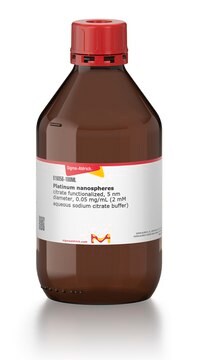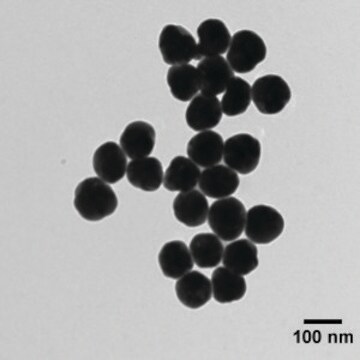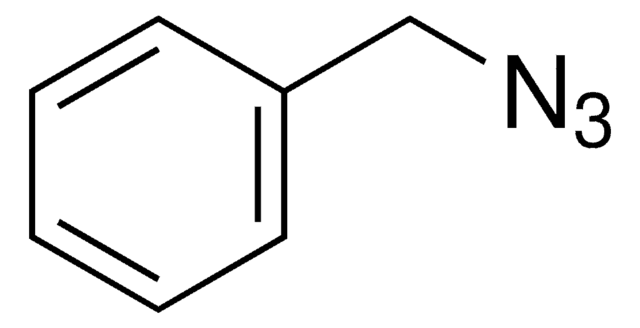795925
Silver nanospheres
10 nm avg. part. size, PVP functionalized, 0.02 mg/mL in water
About This Item
Recommended Products
form
dispersion
nanospheres
concentration
0.02 mg/mL in water
avg. part. size
10 nm
density
0.996 g/mL at 25 °C
λmax
390 nm
functional group
PVP
storage temp.
2-8°C
Looking for similar products? Visit Product Comparison Guide
Application
Hazard Statements
Precautionary Statements
Hazard Classifications
Aquatic Chronic 2
Storage Class Code
12 - Non Combustible Liquids
WGK
WGK 3
Flash Point(F)
Not applicable
Flash Point(C)
Not applicable
Choose from one of the most recent versions:
Already Own This Product?
Find documentation for the products that you have recently purchased in the Document Library.
Articles
The recent emergence of a number of highly functional nanomaterials has enabled new approaches to the understanding, diagnosis, and treatment of cancer.
Dr. David Medina Cruz et. al. investigate advances in noble bimetallic nanoparticles (BMNP) to more precisely measure and monitor glucose levels in the blood. They focus on the use of enzyme-free silver and gold nanoparticles, such as Ag-Au, Ag-Pt, Ag-Pd, and Au-Pt, and how their structures contribute to biosensor detection.
Biomaterials science involves the design and fabrication of smart materials for studying, directing, or mimicking biology. For successful integration of biomaterials in biological research, a meaningful understanding of biological systems is required.
Our team of scientists has experience in all areas of research including Life Science, Material Science, Chemical Synthesis, Chromatography, Analytical and many others.
Contact Technical Service








